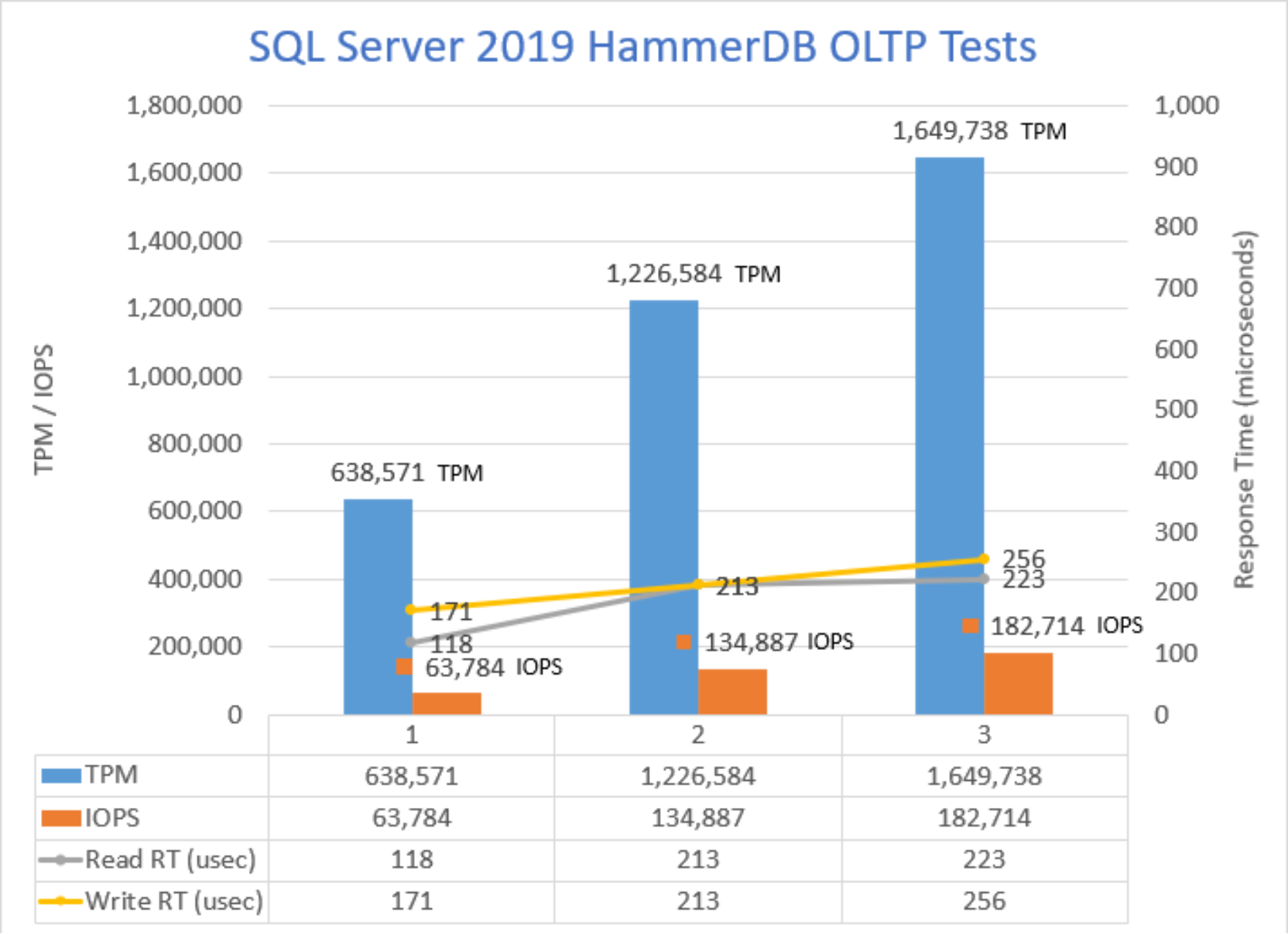Home > Workload Solutions > SQL Server > White Papers > Dell PowerMax 2500 and 8500 Best Practices for Mission Critical SQL Server Databases > Performance tests with storage compression disabled
Performance tests with storage compression disabled
-
The performance tests demonstrate PowerMax ability to scale SQL Server database workloads at high IOPS and low latencies.
At first, one HammerDB workload is used to exercise one SQL Server instance and user database using 30 virtual users and 2,000 warehouses (WH). Next, two HammerDB workloads are used simultaneously, each using 30 virtual users exercising 2,000 WH databases. Then, three HammerDB workloads are run similarly. Each test is run for 30 minutes to allow for a steady state run, and in each test, measurements are collected from HammerDB, the databases, hosts, and storage.
PowerMax compression is not enabled for the SGs hosting the user databases in this test case. The SGs are set with a Diamond SL.
The following figure shows the results. We see that by increasing the number of database workloads, we achieve near linear scalability while maintaining low read and write latencies in the range of 200 microseconds (~0.2 ms).

Figure 14. SQL Server scaling performance tests
The following figure shows the PowerMax two-node (single-engine) front-end and back-end use during a simultaneous run of the three databases. The front-end use reached 71 percent, and the backend utilization reached 41 percent. In general, PowerMax systems are configured with the appropriate storage, cache size, and number of nodes based on the workload needs.
Note: Many aspects affect system use, including the number of cores associated with components such as front-end, back-end, replications, protocols (such as FC, iSCSI, file, and NVMe/TCP), and data reduction. These results are not a reflection of PowerMax performance limits. They are based on the specific lab environment available for these tests and provided for educational purposes and validation of the best practices.

Figure 15. PowerMax back-end use during the three databases simultaneous run
